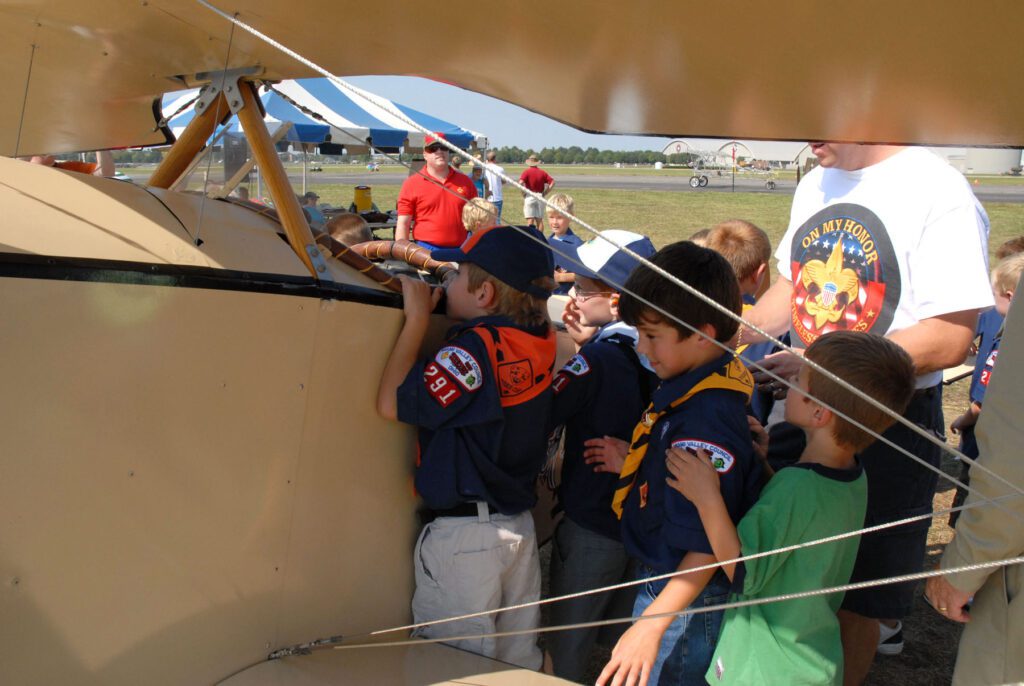The United States Air Force (USAF) is a key branch of the U.S. Armed Forces, dedicated to protecting the nation’s interests globally. With a long history dating back to the early 20th century, the Air Force has been instrumental in national security, strategic deterrence, and global operations. This article explores the Air Force’s mission of defending the U.S. and its interests through air and space superiority, as well as its diverse capabilities in advanced aircraft, space systems, and cyber defense. The Air Force is comprised of various components such as Air Combat Command, Air Mobility Command, and Air Force Space Command, each with unique missions contributing to the overall strength and readiness of this dynamic military force. In an ever-changing world, the Air Force remains a crucial element in safeguarding the nation and maintaining its dominant position in air and space domains.
The United States Air Force (USAF) is the aerial and space warfare branch of the U.S. Armed Forces, responsible for protecting the United States and its interests around the world. With a history that dates back to the early 20th century, the Air Force has played a vital role in national security, strategic deterrence, and global operations. In this article, we will take a closer look at the Air Force’s mission and capabilities, as well as the different components that make up this dynamic and powerful military force.
###Mission
The primary mission of the U.S. Air Force is to defend the United States and its interests through air and space superiority. This includes the ability to conduct strategic bombing missions, provide close air support for ground forces, conduct reconnaissance and surveillance operations, and deliver humanitarian assistance in times of crisis. The Air Force also plays a critical role in maintaining strategic deterrence against potential adversaries, ensuring that the U.S. remains a dominant force in the global arena.
###Capabilities
The U.S. Air Force boasts a wide range of capabilities that enable it to effectively carry out its mission. One of the most important capabilities of the Air Force is its fleet of advanced aircraft, including fighters, bombers, transport planes, and reconnaissance aircraft. These aircraft are equipped with the latest technology and weaponry, allowing them to perform a variety of missions with precision and efficiency.
In addition to its aircraft, the Air Force also has a robust space capability, including satellites, space systems, and launch vehicles. These assets provide critical support for communication, navigation, surveillance, and reconnaissance operations, as well as missile warning and weather forecasting.
The Air Force also possesses a strong cyber capability, allowing it to defend against cyber attacks and conduct offensive cyber operations when necessary. This capability is essential for protecting U.S. networks and critical infrastructure from potential threats in the digital domain.
###Components
The U.S. Air Force is divided into several major components, each with its own specific mission and capabilities. These components work together to ensure the Air Force is able to respond to a wide range of threats and challenges. Some of the key components of the Air Force include:
1. Air Combat Command (ACC) – Responsible for organizing, training, and equipping combat-ready forces for rapid deployment and employment.
2. Air Mobility Command (AMC) – Provides global airlift, aerial refueling, and aeromedical evacuation for U.S. and allied forces.
3. Air Force Global Strike Command (AFGSC) – Responsible for maintaining and operating the Air Force’s strategic bomber and intercontinental ballistic missile forces.
4. Air Force Space Command (AFSC) – Manages the Air Force’s space operations, including satellite communications, missile warning, and space surveillance.
5. Air Force Special Operations Command (AFSOC) – Conducts special operations missions, including counterterrorism, unconventional warfare, and intelligence gathering.
###Conclusion
The United States Air Force is a vital component of the U.S. military, providing critical air and space capabilities that are essential for national security and defense. With a wide range of missions and capabilities, the Air Force is able to respond to threats and challenges around the world with speed, precision, and overwhelming force. As the U.S. faces an increasingly complex and uncertain global environment, the Air Force will continue to play a crucial role in protecting the nation and its interests, ensuring that the U.S. remains a dominant force in the air and space domains.
